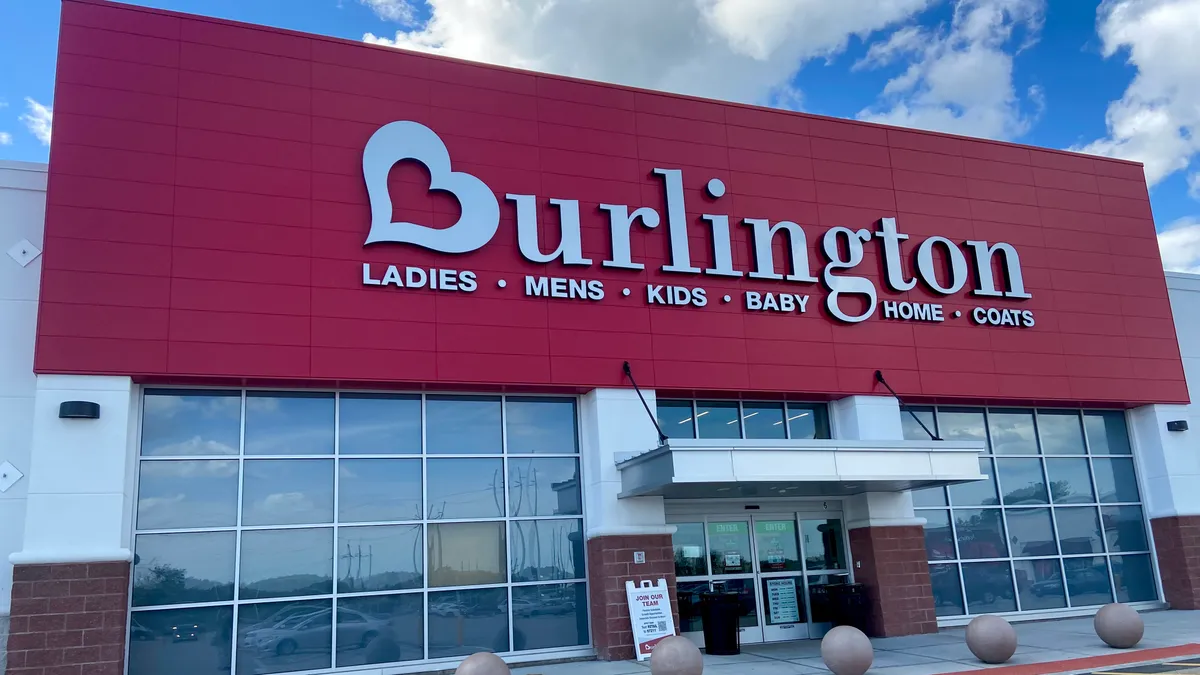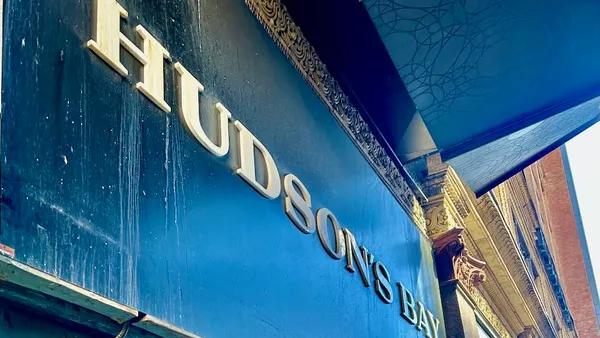Dive Brief:
- Off-price retailer Burlington’s inventory fell 8% year over year in Q3 to $1.3 billion as the company worked through reserve stocks it had purchased opportunistically in 2022.
- The company has been able to drive faster inventory turns by getting merchandise to stores faster, among other initiatives, CEO Michael O'Sullivan noted on a Nov. 21 earnings call.
- Executives also outlined how the company planned to gain back 3 percentage points of lost operating margin since 2019 through freight initiatives and more efficient inventory management, among other efforts.
Dive Insight:
While Burlington’s store inventory actually increased slightly, at 2% in Q3, the decline in its reserve inventory drove the overall decrease in stock levels.
Burlington’s reserve inventory mainly includes merchandise purchased opportunistically, which the retailer waits months or until the next season to ship out to stores.
“In the third quarter last year, we significantly built up reserve inventory,” Burlington CFO Kristin Wolfe said on the call. At the time, she explained, the company was concerned about supply chain disruptions and delays, so it brought goods in early. That also raised the levels of in-transit inventory on Burlington’s books last year.
“Now this year, the environment is very different, and there's been no need to bring in receipts in early,” Wolfe said.
The retailer’s experience with the previous levels of reserve inventory today are feeding its efforts to boost its efficiency and margins. The higher use of reserve stock, together with increased buying of what Wolfe described as “closeout or true off-price” purchases, required more time to process in distribution centers.
“So we've had a significant number of learnings, and we're focused on numerous efficiency initiatives to: one, reduce labor hours and processing these buys; two, more efficiently manage the flow of goods in and out of reserves; and lastly, to minimize the number of touches in our distribution center,” Wolfe said.
Key to increasing inventory turns and reducing markdowns is getting inventory to stores and on shelves more quickly. “Our supply chain teams are doing a great job moving goods quickly through the DCs and flowing product to stores,” Wolfe said.
Of the 300 basis point decline in operating margin in recent years, Burlington expects to add about 200 back through its inventory efforts as well as lower freight costs, with help from its transportation initiatives, according to Wolfe. In the longer term, O’Sullivan said that investments in distribution center automation could yield yet more benefits to the retailer’s profits.
In outlining a “bull case” scenario for Burlington, Morgan Stanley analysts said in an emailed research note that optimizing comparable store inventory could help drive annual gross margin expansion of around 50 basis points.














